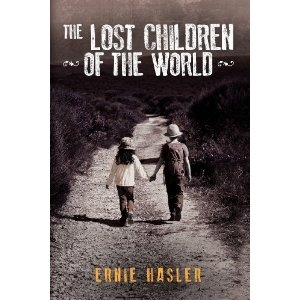
The Lost Children of the World
Ernie Hasler’s The Lost Children of the World faces the harsh reality of people trafficking. The book also explores the far-reaching social devastation of violent conflicts. While rather deep in its goals and subject matter, at its heart, Hasler’s book is simply the story of a brother and sister.
The plot follows Maria and Nico who are thirteen and fourteen, respectively. They are orphaned and trafficked during the conflict in Sarajevo in the early 1990s. The story begins with Maria and Nico being kidnapped as the barn in which their parents are trapped burns. Readers follow their captivity and oppression; brother and sister are separated and forced to work in slave-like conditions.
The book’s villain is Harold Szirtes, who is at the center of a massive ring of prostitution, drug smuggling, and people trafficking. His murderous ways dominate both his personal and professional lives—he throws his wife over a balcony and runs a hotel and his estate purely through coercion.
Maria and Nico are eventually reunited and escape from Szirtes’s grasp with the help of one of Szirtes’s henchmen, Herr Shoemaker, during an international soccer tournament. This dark story concludes with the ultimate triumph of hope, which leaves readers invigorated, rather than distraught for Nico and Maria.
The narrative is somewhat overwhelmed by the novel’s opening materials. The disclaimer at the beginning mentions pithy information about trafficking that may have been better explored in an appendix, and in more depth. The foreword is short but overly explanatory about people trafficking around the world. The list of characters belabors the front matter.
The writing of the story is clear but adjective-laden. Hasler’s use of omniscient narration makes the action feel distant, and factual recounting of events replaces scenes that build context and help readers connect to characters. That said, Hasler’s vocational expertise in health and safety shows in the humanitarian concerns expressed in the narration. Violence and sexuality are quite minimal given the subject matter, helping readers see the injustice without being too overwhelmed by the horror.
With The Lost Children of the World, Hasler tackles a very real, very important topic in today’s world.
Reviewed by
Melissa Wuske
Disclosure: This article is not an endorsement, but a review. The publisher of this book provided free copies of the book and paid a small fee to have their book reviewed by a professional reviewer. Foreword Reviews and Clarion Reviews make no guarantee that the publisher will receive a positive review. Foreword Magazine, Inc. is disclosing this in accordance with the Federal Trade Commission’s 16 CFR, Part 255.
